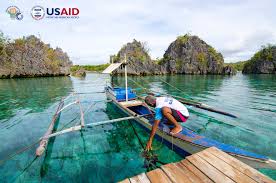Tourism has always been one of the Philippines’ strongest industries, but in the digital age, travelers don’t rely only on brochures or ads—they rely on people. The Philippines Community (필리핀 커뮤니티) plays a quiet yet powerful role in shaping how the country is perceived and experienced. Through its posts, recommendations, and shared stories, it has become one of the most authentic ambassadors of Filipino hospitality.
1) Real travelers, real stories
Travel marketing campaigns are polished—but personal posts are persuasive. When community members share trip diaries, restaurant reviews, or tips on navigating local areas, readers see genuine experiences rather than staged promotions.
These community voices—locals, expats, and repeat visitors—create a living, evolving travel guide that’s far more convincing than static websites. It’s tourism through authenticity.
2) From one post to a packed restaurant
A single post in the 필리핀 커뮤니티 can transform a small eatery, café, or tour service overnight. Travelers trust their peers, and when someone says, “This place felt like home,” the effect spreads.
That digital word-of-mouth gives small businesses nationwide visibility without expensive ads. Restaurants in Baguio, hostels in Cebu, and local guides in Palawan often find their first wave of international guests thanks to honest community reviews.
3) Promoting responsible tourism
The community doesn’t just attract visitors—it educates them. Members share etiquette tips, environmental guidelines, and reminders to support local businesses ethically. Threads about coral preservation, noise control in tourist spots, or cultural do’s and don’ts help shape respectful travelers.
As a result, the Philippines Community indirectly reduces negative tourist impact while promoting sustainable travel habits that benefit both visitors and locals.
4) Crisis communication that protects the country’s image
When unexpected events happen—like typhoons, temporary closures, or health alerts—the community becomes a reliable information hub. Members post verified updates and clarify rumors quickly, preventing misinformation from spreading abroad.
This proactive communication helps protect the Philippines’ reputation as a safe, welcoming destination. Instead of panic, travelers see coordination, kindness, and real-time solutions.
5) Building cross-cultural understanding through travel
Each travel discussion doubles as a cultural exchange. Visitors ask about greetings, public behavior, or regional customs; locals answer with context and patience. This constant flow of understanding builds the Philippines’ image as not just beautiful, but gracious.
Filipino hospitality—malasakit and pakikisama—comes alive in every helpful reply.
6) The multiplier effect of positivity
Good stories multiply faster than any campaign. A photo of a kind taxi driver returning a lost wallet, or a local family sharing food with stranded tourists, spreads warmth worldwide. Those anecdotes, shared daily in the 필리핀 커뮤니티, quietly rebuild trust and curiosity among travelers who might have overlooked the country before.
The community turns everyday kindness into a brand asset.
7) A modern form of national pride
What makes this digital ecosystem special is its patriotism without propaganda. Members don’t push slogans—they simply share honest, joyful experiences. Whether celebrating a new resort, street food discovery, or act of honesty, they showcase the Philippines as a country where good people and good times meet.
This authenticity carries far more power than curated tourism ads.
8) Beyond tourism—lasting connection
The Philippines Community (필리핀 커뮤니티) doesn’t end its role when the trip is over. Travelers stay connected, post follow-ups, and even plan returns or meetups. That sense of continuity transforms one-time tourists into long-term advocates who promote the Philippines organically for years to come.
Final Thought
Every story, review, and conversation inside the 필리핀 커뮤니티 strengthens the Philippines’ global reputation—not through marketing, but through people. It’s proof that national image isn’t built by campaigns alone, but by community spirit.
The Philippines doesn’t just attract visitors; it wins hearts—and that’s the best kind of tourism there is.

